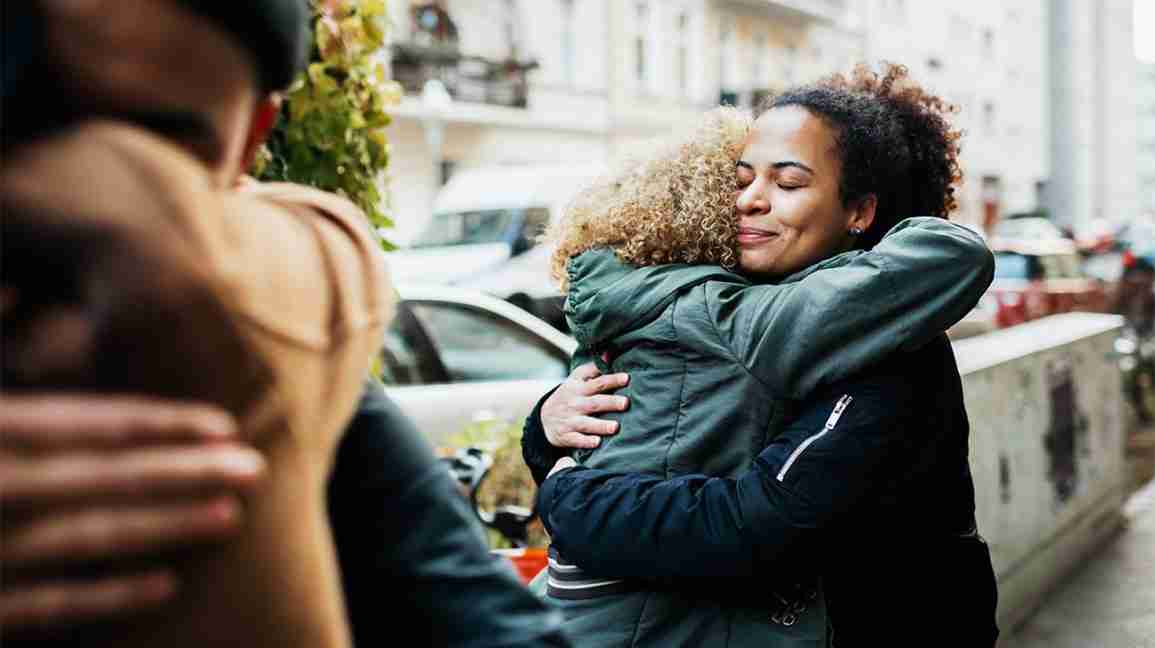
- As more states begin reopening, experts say socializing with a limited number of friends and family outside your home can be done if certain precautions are implemented.
- That means physical distancing, wearing masks, and practicing good hygiene.
- Experts advise avoiding large groups of people.
- Instead, health officials recommend creating “social bubbles,” which are defined as a group of 12 people or fewer who don’t socialize with other bubbles for 3 weeks at a time.
- Gatherings should be outdoors, such as a park or a backyard, and everyone needs to agree to follow the same rules.
All data and statistics are based on publicly available data at the time of publication. Some information may be out of date.
While some parts of the country have been under shelter-at-home orders for almost 3 months, the social part of being human beings has been starved.
We’ve held virtual graduations, drive-by birthday parties, and stayed connected with families and friends over Zoom and other video conferencing apps.
But it’s not the same.
Now, as many parts of the country are loosening restrictions, people are wondering how to safely see their friends and family in person, without increasing all of our risks to the coronavirus.
On a recent Friday and again on Sunday, Thomas Plante and his wife hosted a “socially distant cocktail hour” each evening with a different couple. Their guests went directly into their backyard, brought their own drinks, glassware, and snacks, and the two couples sat more than 6 feet from one another and chatted for about an hour.
“This follows all the health precaution rules, and a lot of people — including myself — have gotten a bit tired of the Zoom cocktail party thing by now,” Plante, a licensed psychologist and adjunct clinical professor in the department of psychiatry and behavioral sciences at Stanford University School of Medicine, told Healthcare Website.
In order for things to truly “get back to normal,” like having carefree dinner parties with dozens of guests sharing the same space and being unafraid to touch common surfaces, a vaccine is needed. And that vaccine needs to be effective and used widely.
Right now, only about 70 percent of Americans say they would get a coronavirus vaccine, if one were available, according to a recent Washington Post-ABC News poll.
Because there are no vaccines for any strain of the novel coronavirus on the market and no large scale manufacturing capacity for these vaccines yet exists, doing it for the first time “can be tedious and time consuming,” researchers from the Icahn School of Medicine at Mount Sinai reported in April in the journal Immunity.
So, until researchers have developed a safe and effective vaccine, experts like Plante say the United States and the rest of the world will be living in some kind of pandemic setting for some time.
“So, we all need to adapt and think in terms of a post-COVID-19 world relative to our previous pre-COVID-19 world, just like we had to do with 9/11, HIV/AIDS, and so forth,” Plante said.
That means taking precautions, such as physical distancing, wearing masks, and practicing good hygiene.
Dr. Nancy Gin, medical director of quality and clinical analysis for Kaiser Permanente in Southern California, says people have been incorporating best practices for 3 months now — it’s become part of everyday life. Now, she says, they’re doing some “cautious toe dipping” by stepping out of the house to be together in various settings.
“It’s an important element for people who need to nourish their souls by being with those they love,” she said.
But in order to do it safely, Gin says that means people have to be candid about their behaviors, such as if they’ve been around other people, especially if they’re in contact with vulnerable people. No matter where we are at with infection rates, that includes the elderly and the immunocompromised.
Above all, people need to avoid others if they’re not feeling well.
And being with other people may be more common recently, as millions of people around the world have been attending Black Lives Matter protests.
While it’s a healthy expression of First Amendment rights to come to the aid of those in the community who are victims of ongoing systemic oppression, it may have some people forgetting that we’re all in a global pandemic.
“We live in a society that does not have a good attention span,” Gin said. “We are nowhere near the herd immunity we need.”
That’s why non-protesting social gatherings still need to be kept small and intimate, and some orders from health officials are being loosened to allow them.
As of June 9, three states — California, Kentucky, and New Jersey — and Puerto Rico have active statewide stay-at-home orders. Three others — New York, Oregon, and Pennsylvania — have variations of those rules and the rest of the states have county-by-county orders.
In Alameda County in Northern California, people are now allowed to create their own “social bubbles,” which health officials define as a group of 12 people or fewer who don’t socialize with other bubbles for 3 weeks at a time. Still, these gatherings should be outdoors, such as a park or a backyard, and everyone agrees to follow the same rules.
“Remember that your actions affect everyone in the group,” the Alameda County Health Department says in its “plain English” guidelines.
Neighboring Contra Costa County’s health orders now allow outdoor gatherings of up to 100 people for protesting and religious gatherings.
But those gatherings shouldn’t include the handshakes and hugs. Gin says elbow bumps or foot taps are the new forms of expressing that you’re happy to see someone. And those greetings should only be after good hand hygiene and given while wearing face masks.
And if it’s over food, experts still recommend people don’t dine-in together, but rather get separate takeout orders and enjoy them outside.
“We just want people to stick with the basics,” Gin said. “This coronavirus isn’t going anywhere for a while. We’re only 3 months in, but we have learned a lot.”
One thing Gin says she’s learned is that virtual reunions with friends and loved ones should stick around. She says she’s been able to be on Zoom calls with family all over the world, something that wouldn’t normally happen before.
But under our so-called “new normal,” we all have to remain extremely cautious about our contact with others, even as health officials loosen some restrictions.
Plante’s other recent socially distanced cocktail party was with his neighbors, who all kept their distance and talked loud enough to hear.
He says that kind of interaction is important — especially people who consider themselves extroverts — but remaining vigilant about the new rules will be critically important as we choose to come together. That includes younger people, who may feel they’re more invincible to the virus.
“We’re in a new world together, and so, we all have to adapt and get used to it,” he said. “Since we are in it for the long haul, we need to find ways to make this safe but sustainable. And we must be ready to say goodbye to our old world and way of being and hello to our new world and way of being.”
